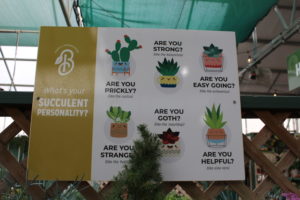What’s Your Lucky Charm?
St. Patrick’s Day is March 17. For many people in the United States, this holiday is simply an excuse to drink Guinness or pinch people who forget to wear green. For others, it’s an opportunity to celebrate their Irish heritage real or imagined in the name of the country’s patron saint, who became a missionary and brought Christianity to Ireland after being captured by raiders and imprisoned for six years.
Americans take pride in their Irish heritage. Here in Chicago, the river is dyed a bright Kelly green. Boston, New York and Philadelphia have been celebrating St. Patrick’s Day with a citywide parade since even before the Declaration of Independence was signed.
Although I am not Irish, I do enjoy a pint of Guinness as much as the next person. But the one thing that comes to mind for me on St. Patrick’s Day is neither beer nor parades; instead, I think of luck. The kind of luck that makes leprechauns appear, promising pots of gold if you’ll only follow them to the end of that rainbow. Maybe it’s just my unfl agging sense of optimism, but to me, St. Patrick’s Day is all about that luck of the Irish.
We’re Already Green!
Our industry is already associated with many things considered lucky around this holiday; we’re even called the green industry. The color automatically belongs to the natural world and to those who garden. A person with good luck getting things to grow someone who shops at your garden center, naturally is said to have a green thumb. (That phrase, by the way, derives from the grass stains on those people’s fi ngers from being out in the yard all day.)
In the horticultural world, there are actually a few plants considered to be lucky themselves. There’s always the four-leaf clover so many people hope to fi nd out in meadows or on a hike. But the shamrock, Oxalis regnellii a symbol of Ireland that people often confuse with the four-leaf clover is also given as a gift around St. Patrick’s Day. The berries of elder plants, Sambucus, have herbal medicinal benefits that help fight respiratory infections, but they were once thought to be unlucky in the garden. Cutting down an elder tree, according to folklore, would release a spirit known as the Elder Mother, and she would wreak her revenge on the owners of the garden.
The Wheel of Fortune
It’s been said that the number seven is lucky, but for many of the growers who supply your garden centers with product, the seventh year of the 21st century was anything but. And the lucky retailers who managed to escape the indirect effects of these problems were few and far between. Add that to a nationwide housing slump and lower overall spending on behalf of consumers, and nearly no one scraped by unscathed by last year’s misfortunes.
So for the rest of you, it’s not luck keeping you on top of the retail game. As Stan Pohmer writes in this month’s column, it’s your calculated ability to adapt to change. Your cautious approach and tremendous business savvy has kept that elusive pot of gold from bottoming out completely in the face of huge competition from big boxes and tough economic and ecological circumstances.
There is one way that luck does play into our industry, though: At last month’s American Nursery & Landscape Association (ANLA) Management Clinic in Louisville, emcee John Kennedy of ishakeitup.com told a keynote crowd that we are, in fact, very lucky. Unlike many Americans, who wake up in the morning to sit at a desk for eight hours doing a job they feel no passion for, folks in our industry get out of bed and go to work because we want to, not because we have to. If you didn’t make it to this year’s Management Clinic, you can check out the show dailies produced by the Lawn & Garden Retailer editorial staff at www.lgrmag. com/ANLA-Management-Clinic-Zone41.
















 Videos
Videos





